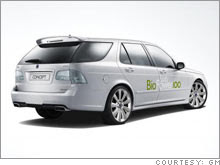1. Saab planning hybrid based on GM system (Luxury division also shows ethanol-powered concept. Executive declines to set target date for hybrid) GENEVA (Reuters) -- Saab Auto has a hybrid vehicle in development based on technology being developed by parent company General Motors Corp, a senior executive said on Tuesday. Saab will also cut development costs by sharing more parts with other GM (Charts) vehicles, integrating the Swedish brand more closely in GM's operations, Saab Managing Director Jan Ake Jonsson said on the sidelines of the Geneva auto show. Full story 2. Hybrid Car Sales, February 2007 Toyota and Nissan made the big splash this month in their hybrid car sales. Toyota sold 187,330 vehicles, an increase of 12.2 percent over February 2006. Of those, 10.1% were hybrids. Meanwhile, Nissan debuted the Nissan Altima Hybrid. Full story 3. Lotus Hybrid Proton Gen.2 Lotus is looking to break into the hybrid marketplace with a prototype to be unveiled at the Geneva Internatio...
Ioxus Inc. is an up and comer in the energy storage industry that has plans this Monday to announce a new hybrid storage device that it hopes will radically alter batteries used in the auto, medical, and consumer electronics industries. The teased product is said to be roughly the size of a typical C-cell battery and combines the fast charge / discharge benefits of ultracapacitors with the impressive energy-to-weight ratio of a lithium-ion electrode. As a result, Ioxus says the hybrid devices can store more than double the energy of traditional ultracapacitors and charge in a matter of seconds. The catch is that the hybrids have shorter life spans of 20,000 cycles compared to millions of cycles for typical ultracapacitors. We're also taking this with a grain of skepticism until these claims are proven in the field. Some brief digging though did unearth an article written by MIT researchers and published in Scientific American last year that discusses the possible benefits of supercharging lithium-ion cells -- which is encouraging.
DVICE |
CNET | Email this | Comments [From Hybrid batteriestease big energy capacity while charging in seconds]


Comments